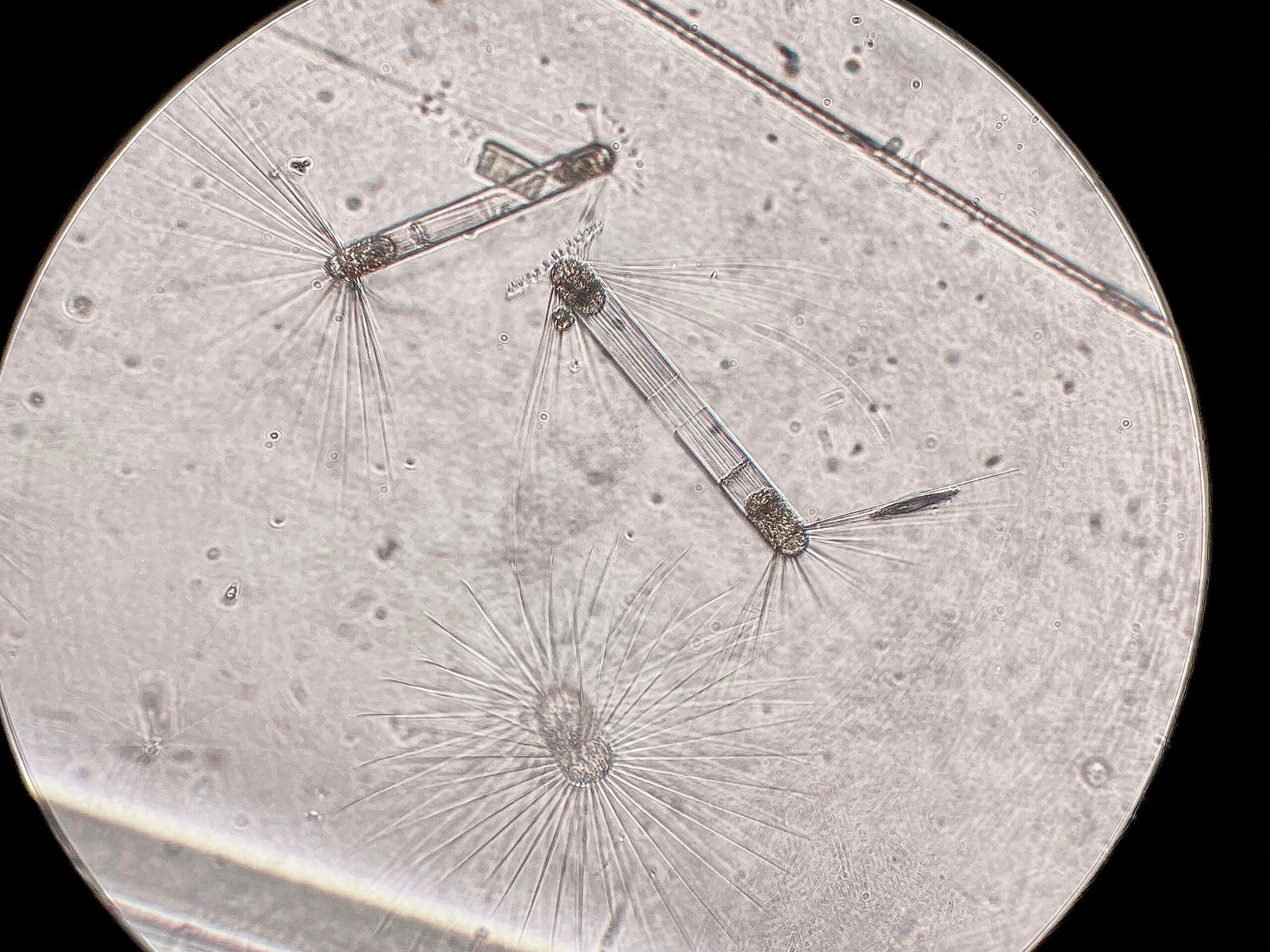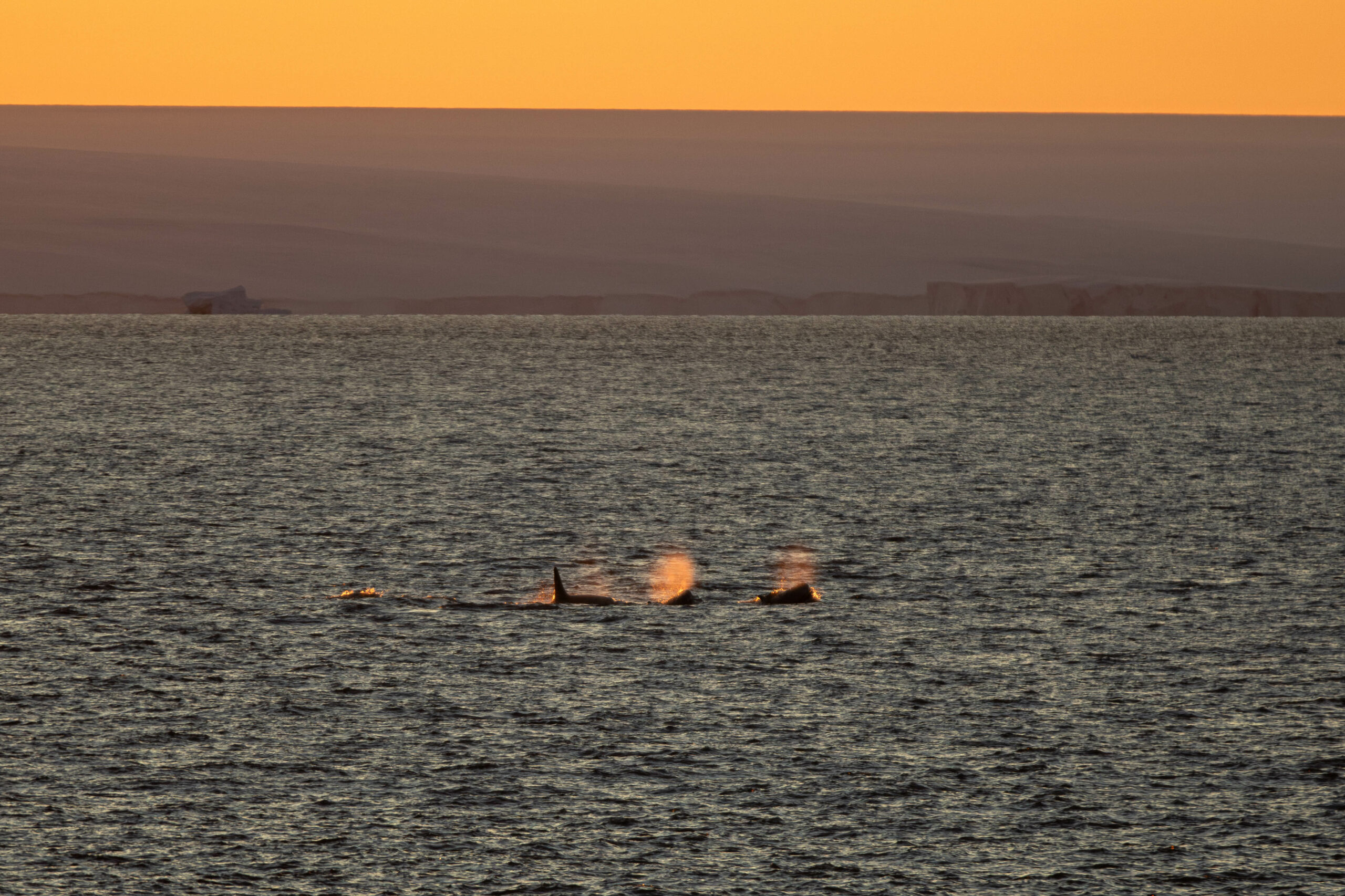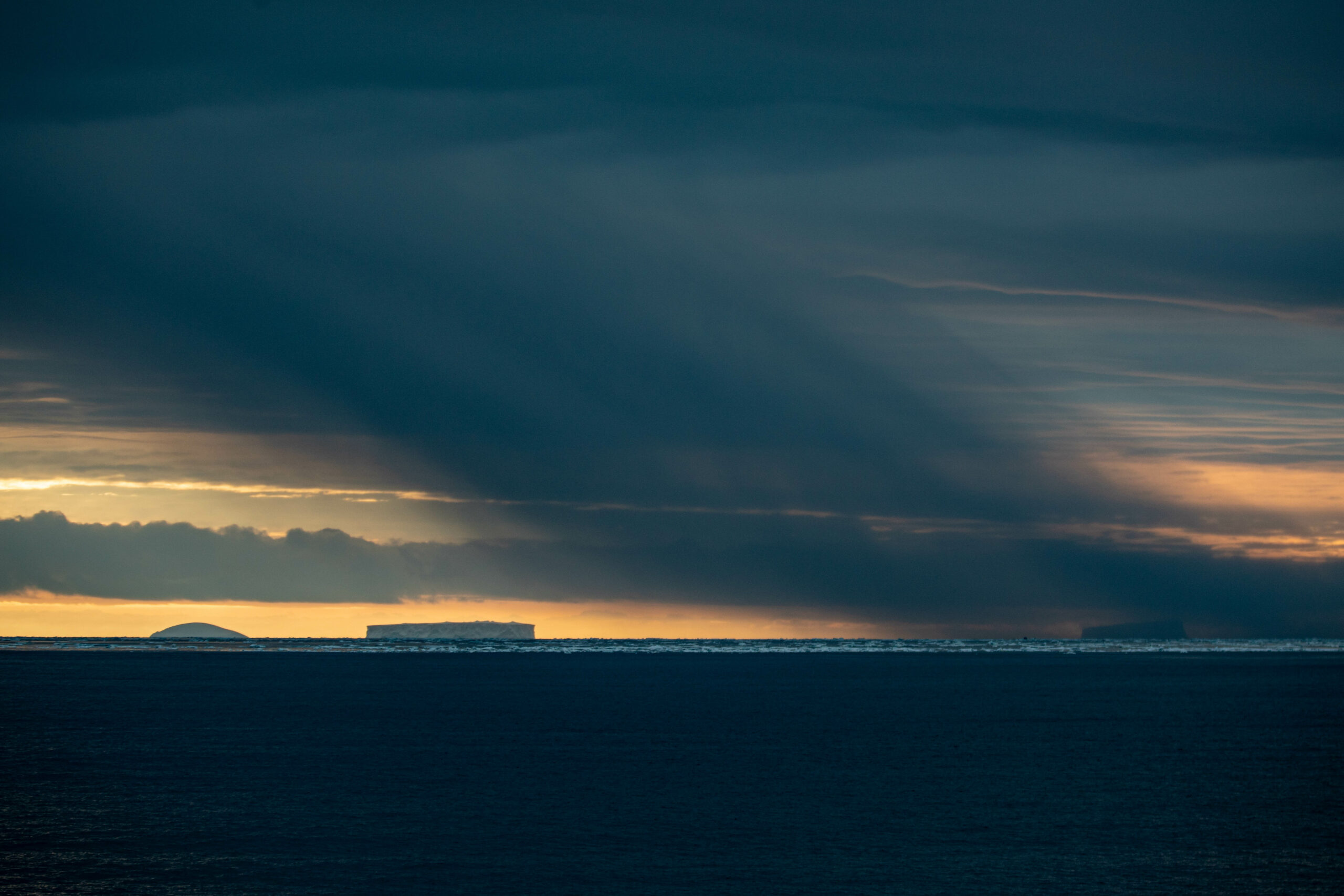Life-cycle of an Antarctic cloud
Dr Marc Mallet (IMAS/AAPP)
We’re in the frigid Southern Ocean close to the icy edge of Mertz Glacier and the Antarctic continent. These waters are teeming with life. The sea is green. Sea birds, penguins, humpbacks and orcas are feeding. I don’t even need to check our readings to know what’s in the air. After a few days of clear skies, clouds are starting to form.
It might seem that the clouds developing above us have nothing to do with the marine life surrounding us on CSIRO research vessel (RV) Investigator, but they’re related in a profoundly important and interesting way.
We’re so close to the continent we can feel its cold breeze blowing on our faces. The gentle slope of Antarctica is deceptive. At first I thought it was just a low cloud on the horizon – I didn’t have a frame of reference for what a blanket of ice rising gently over thousands of kilometres between us and the Antarctic plateau would look like. I check the synoptics and see that this katabatic wind, sliding downslope under the force of gravity, has been tumbling down the three-kilometre-high plateau for the past three days.

Everyone is standing near the bow of RV Investigator, mesmerised by the view. A colleague asks why I’m so excited. “Dimethyl sulfide” is my response. I launch into explanation with the backdrop of Antarctica in place of my usual powerpoint slides.
Dimethyl sulfide (DMS) is produced in the ocean from phytoplankton and bacteria as a by-product of their growth and lifecycle. When it builds up in the ocean, some of it escapes into the atmosphere as a gas. In sunny conditions, DMS reacts to form tiny little particles that float in the air, just a few nanometres in diameter. We call these tiny particles aerosols.
Back home, our air is full of aerosols from smoke, dust, or air pollution. Every single cloud droplet in our skies forms when water cools and condenses onto one of these aerosols. Without them, we’d have no clouds. Through this process, aerosols and clouds change how much solar energy reaches the surface and how much is reflected back out to space.

Down here at the bottom of the world, the aerosols are very different from anywhere else on the planet. For a start, there is very little dust or air pollution. The Southern Ocean is a windy place and there’s a lot of sea spray aerosol in the air. But south of the roaring forties and the furious fifties, close to the Antarctic continent, all we see are aerosols formed from gases emitted by the tiny life forms that live at the surface of the cold ocean.
We think that the DMS produced near the ocean surface goes on a long journey. After it’s released into the air around the coastal waters of Antarctica, it rises high into the atmosphere and inwards over the continent. It’s up there in the thin air that the tiny little aerosols form. When the air comes rolling down the slope of the continent again, the aerosols grow to sizes that make them very effective cloud seeds. We’re trying to figure out the chemistry and the physics that determines exactly how this aerosol growth happens.
Sitting off the edge of the Antarctic continent in the soup of phytoplankton, birds, and whales, we’re right where we need to be to see the beginning and the end of the DMS journey. The clouds above us will be brighter and live longer because of the little life forms that thrive in these cold Antarctic waters.

This interwoven relationship between the ocean’s biology, and the aerosols and clouds in the atmosphere, underscores the fundamental purpose of our MISO voyage.
Every day of data we collect down here is precious, and the international scientific community is desperate for new measurements of gases, aerosols, and clouds that we can use to test and improve our weather and climate models. Getting the brightness of these Antarctic clouds right in these models is the priority.
While many people are always wishing for sunshine, the Atmosphere team on the MISO voyage is quite content with cloudy weather.
2024 MISO Atmosphere Team: Marc Mallet, Alain Protat, Jay Mace, Kelsey Barber, Joel Alroe, with shore support from Erin Dunne, Emily Barnes Franklin, Jennifer Powell, Caleb Mynard, Ruhi Humphries, James Harnwell, Simon Alexander, Branka Miljevic, and Jessie Creamean.
READ MORE Seeding clouds: the power of partnerships in Antarctic research

This research is supported by a grant of sea time on RV Investigator from the CSIRO Marine National Facility which is supported by the Australian Government’s National Collaborative Research Infrastructure Strategy (NCRIS).



